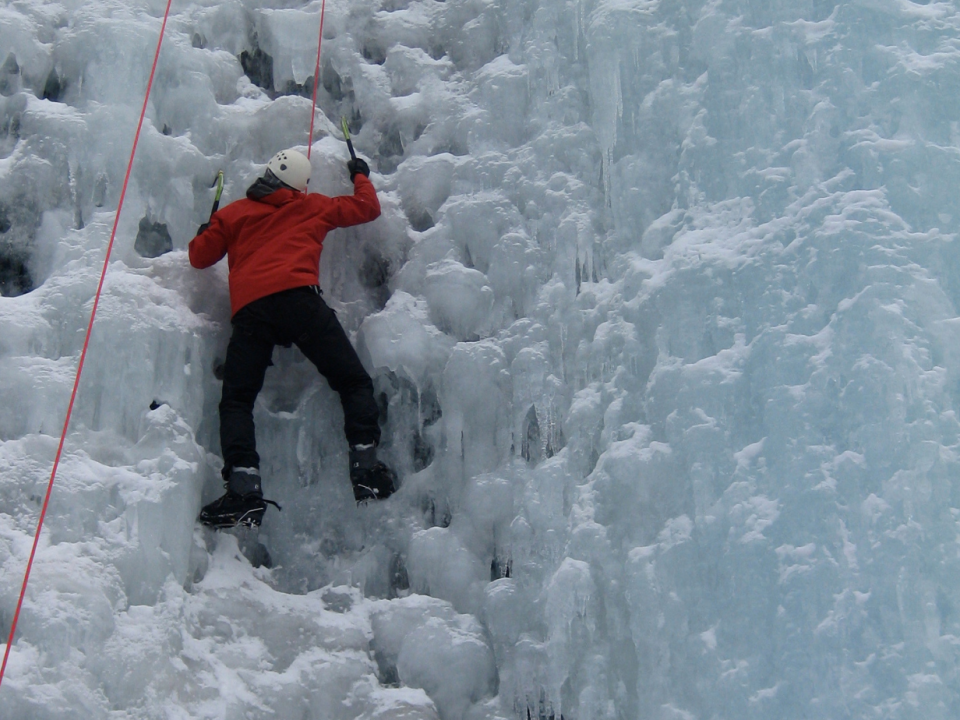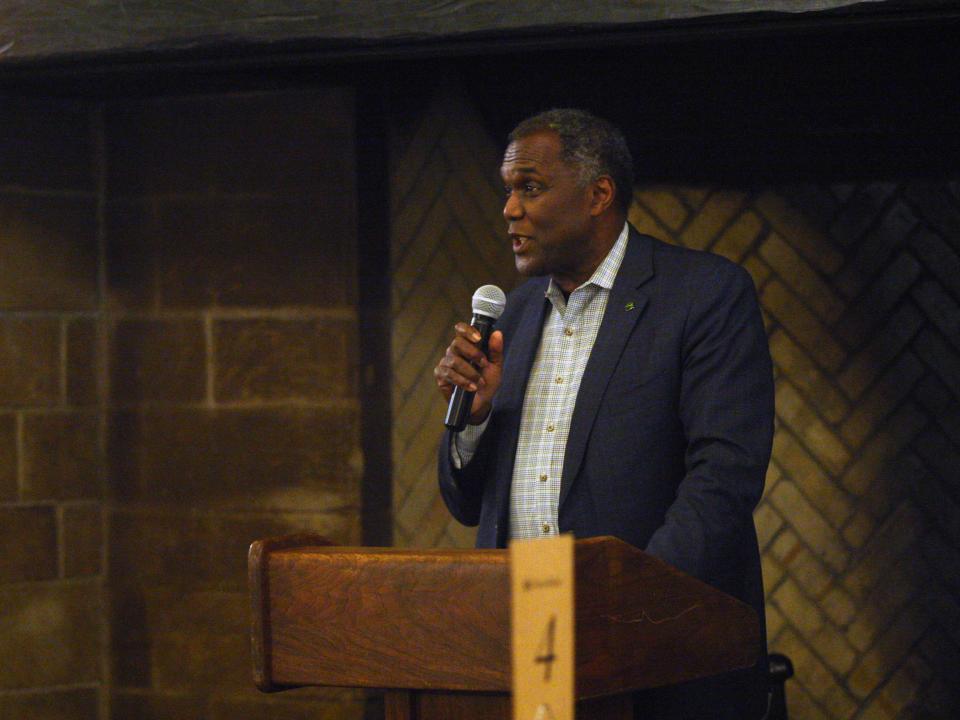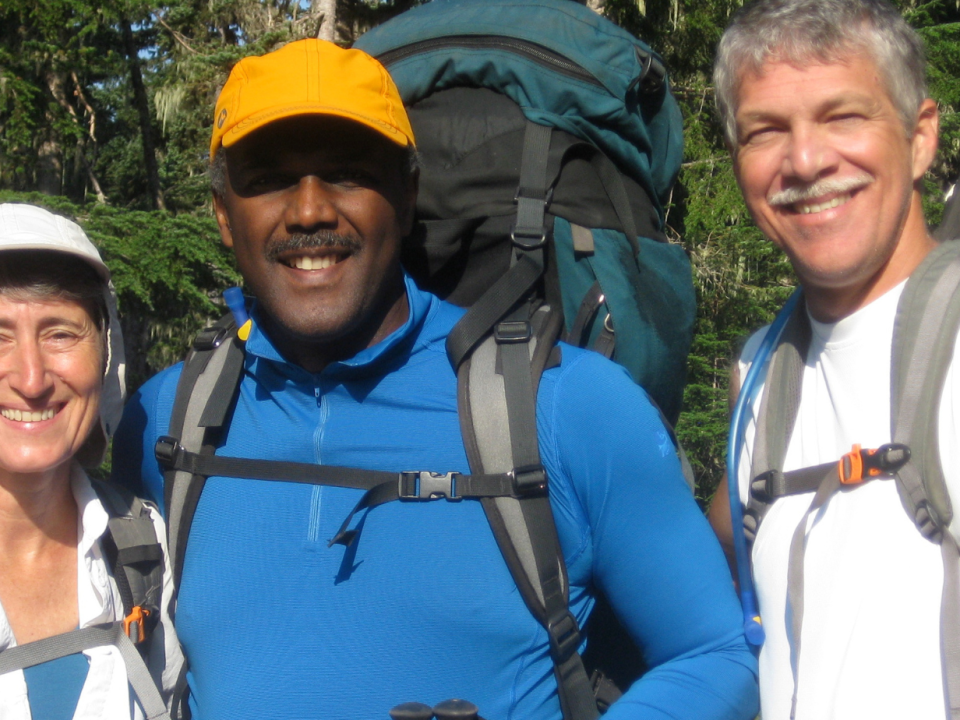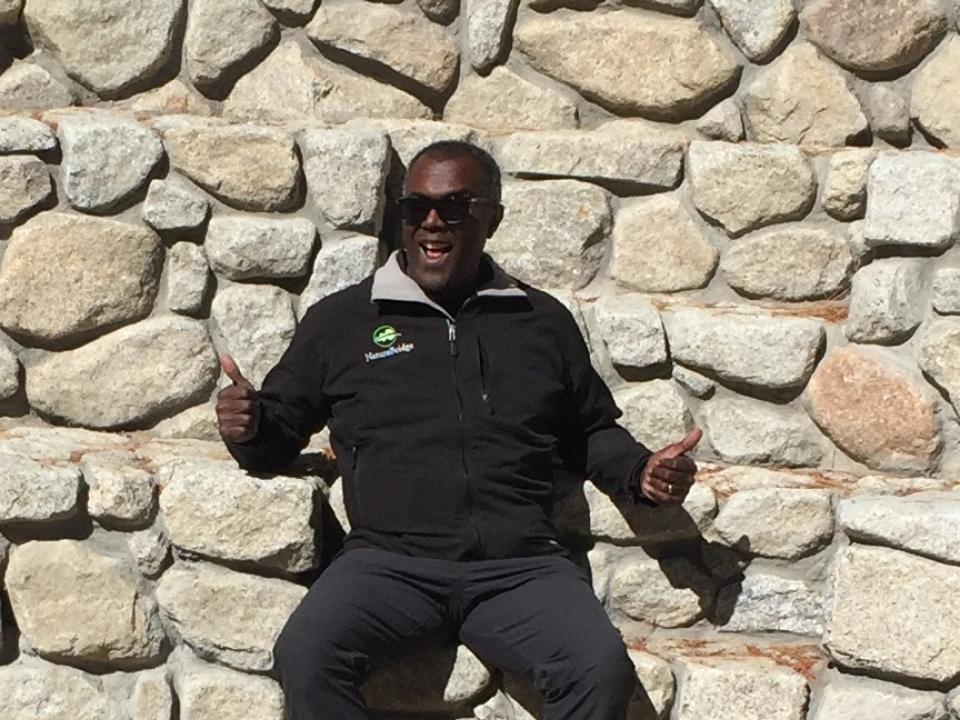Caring for Creation: Dr. Steve Lockhart
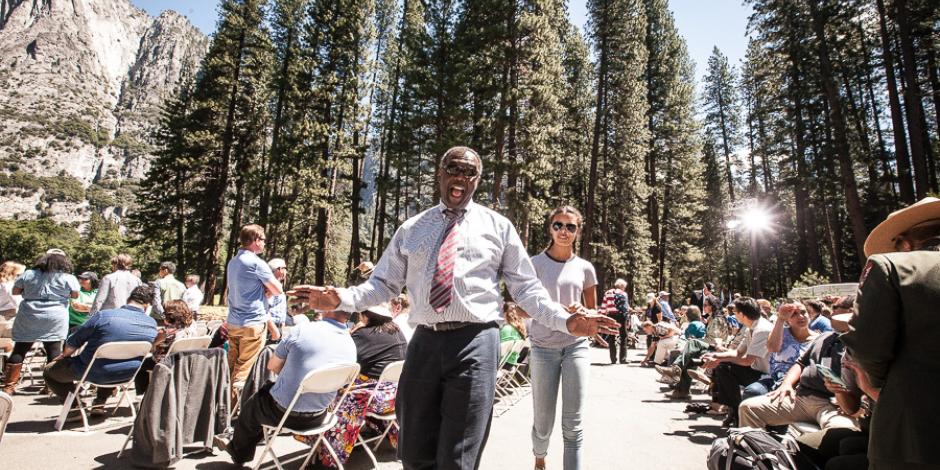
Dr. Stephen H. Lockhart goes by another name to many of those within NatureBridge: The Steve Lockhart. Once you speak with Steve or read his curriculum vitae, you quickly understand he is worthy of that prefix. A Rhodes Scholar, he began college at the age of 15 and graduated at 18, going on to earn a master’s in economics from Oxford and a PhD and MD from Cornell. Steve is one of the most accomplished anesthesiologists in his field and his conservation efforts have earned him numerous distinctions, including being named a Champion of Change by the Obama Administration. He serves and has served on numerous boards, including REI and Molina Healthcare, and recently started Sutter Health Institute for Advancing Health Equity.
He has served NatureBridge in multiple capacities over the years: board member, Board Chair, Chief Medical Officer and more. In our conversation, Steve provides insight as a physician, as a former board chair and as an extraordinarily accomplished agent of change on why NatureBridge survived a global pandemic, the opportunity we have to help students heal post-pandemic and what he would change about the organization with the click of a button.
Bennett Rea: I remember the first time I was introduced to you, my wife was telling me about a Campfire Chat you were doing for NatureBridge. And she said, “Tonight’s speaker is incredible, you should listen — it’s Steve Lockhart. The Steve Lockhart.” You’ve since been described to me on multiple occasions as “The” Steve Lockhart, and I’m wondering how it feels to have legendary “The” status?
Steve Lockhart: [laughs] I don’t know, I mean, it’s pretty incredible. I was just “Steve” or maybe “a Steve” and now…it sounds like “The Golden State Warriors” or something. There’s a certain stature associated with it, and I’m not sure I’m quite worthy of that.
Steve is indeed worthy of that prefix. A Rhodes Scholar, he began college at the age of 15 and graduated at 18, going on to earn a master’s in economics from Oxford and a PhD and MD from Cornell. Steve is one of the most accomplished anesthesiologists in his field and his conservation efforts have earned him numerous distinctions, including being named a Champion of Change by the Obama Administration. He serves and has served on numerous boards, including REI and Molina Healthcare, and recently started Sutter Health Institute for Advancing Health Equity.
In short, Steve has earned the “the.”
He has served NatureBridge in multiple capacities over the years: board member, Board Chair, Chief Medical Officer and more. At a time when it appears the most treacherous portion of the COVID-19 pandemic is behind us, we wanted to hear Steve’s perspective as a physician, as a former board chair and as an extraordinarily accomplished agent of change on why NatureBridge survived a global catastrophe and where the organization should go from here.
Bennett: Rhodes Scholar, Oxford, Cornell…you didn’t take the easy road with your education. What was the most exciting part of your studies?
Steve: Oh, well, I'm going to sound like an incredible nerd, but my mother was a math professor and my undergraduate degree was in math. In fact, my master’s degree was in mathematical economics and my PhD was in biostatistics. So I've always really enjoyed mathematics and some of the most exciting stuff for me was doing math. I'm still doing it. A few years ago I started Sutter Health Institute to Advance Health Equity, and that required me to be involved in quantitative methods for evaluating equity and health care and how to improve it and that sort of thing. That's important in terms of social justice implementation, but also, behind the scenes, it’s a bunch of nerdy mathy stuff. I still get to do that. And I enjoy it.
Bennett: It feels like a really intersectional place that you’ve found yourself — when you were a student for all those years, did you ever imagine applying mathematical principles for the purposes of advancing equity and justice in medicine?
Steve: No. You know, I've never been a “straight line from A to B” person. I really enjoy integrating. I think if I have a strength, it's pulling together things that are unlikely partners or unlikely ideas. For example, my PhD thesis was taking some concepts from one area of mathematics and applying it in a totally different area. I studied mathematics, philosophy and economics and then became an anesthesiologist — people would look at all that and say, “Is there something wrong with you? There’s no coherence in your career path.” But I managed to translate that into several different careers, which, when you link them all together, created a path. It's different, but I just figured you pick your own path and make sure that the nodes of the path are linked by a common passion; a common theme. For me, that’s caring for creation, if you will. Care for the planet and the people on it. That’s how I feel about NatureBridge.
Bennett: You were introduced to NatureBridge a few times, the first being your son taking part in several programs over the course of his childhood. What eventually nudged you over the edge to join the Board of Directors?
Steve: I wound up having Ty Cobb come into my office, who was the CEO of YNI (Yosemite National Institutes, now NatureBridge), at the time. Ty is a talker [laughs]. I'm an anesthesiologist, so my job is to make Ty be quiet and go to sleep so he can have the surgery. And his job is to talk. So, in the pre-op area he was talking about YNI and I didn't recognize the name because I knew YNI better by one of its campuses, the Headlands. Once he explained it, I said, “Oh, yeah, my son went there,” and he just wouldn't stop talking about it. He fell asleep mid-sentence talking about YNI. Afterwards in the recovery room, Ty woke up from the anesthesia and he picked up mid-sentence exactly where he left off before the surgery! I still don't know how he just kept going. And then it turns out he had with him, in his belongings under the gurney, a folder about YNI. He gave me his business card and said I ought to consider being a board member. At first I sort of waved it off as a patient under the influence…but he was a very nice guy and I figured why not, so eventually [my wife] Karen and I went out and had lunch at the Headlands with Ty. A couple hours later, I'm on the Yosemite board. I went to my first board meeting when [my daughter] Anna was three weeks old 20+ years ago, and I remember clearly we hiked up to May Lake with her. I’ve been involved in some way or another ever since.
I just figured you pick your own path and make sure that the nodes of the path are linked by a common passion; a common theme. For me, that’s caring for creation, if you will. Care for the planet and the people on it. That’s how I feel about NatureBridge.Steve Lockhart
Bennett: You first visited Yosemite National Park in 1986, backpacking, hiking, climbing — how did your time at NatureBridge change your relationship to Yosemite?
Steve: It really made me begin to think about our national parks as places of learning — lifelong learning — as opposed to just places of recreation, or even places of wildlife and landscape preservation. Those things are important and valuable, but I started to prioritize the notion of education being part of the National Park Service mission. What resonated most was that NatureBridge hit that idea of youth, and hence, that idea of stewardship. That sense of place, interconnection, stewardship — all those things are transferable to any environment in which a child lives, too. So that's where I think the teachings that NatureBridge’s educators put out and the learnings that the kids take home can translate very well to creating a sense of place where the kids live. Actually, it was very interesting; today, there were a bunch of six- or seven-year-old kids cleaning up around the lake outside the high-rise where I live in Oakland. That's stewardship. You don't have to be in Yosemite to think about stewardship. They have a sense of place. “This is my home, I'm going to take care of it. It's part of the natural world and I'm part of the natural world.” Those lessons are very transferable, and they keep giving throughout one's life. You know, it’s not like elementary addition, then algebra, then calculus, where you outgrow one to get to the other. You never outgrow this.
Bennett: You served as NatureBridge’s Board Chair and Chief Medical Officer, and were part of the risk management team — I’m curious about the unique perspective you might have on the organization’s response to the pandemic.
Steve: I kind of started up the pandemic response for Sutter Health because my PhD was about statistics and epidemiology. So I was following the pandemic before it was pan- in China. We set up our whole emergency response system at Sutter based on that. Some people thought I was crazy because I wanted to do all these things and start to talk about how we’re going to create capacity for bed space and all that. When it comes to NatureBridge…you know, we did have hantavirus; we've had rockfall, we've had floods — we are NatureBridge. Nature is in our name. And these are natural issues or challenges, be they floods and rock falls or be they hantavirus, norovirus or COVID. I feel like it's just part of what we do. We have to be resilient. You know we teach the kids about fires coming through and unsealing and opening up the pine cones, and the pine cones release their seeds, and then new trees are born...so we're just in a little pine cone moment. We have to make sure we have enough seeds in there. And then what do we learn from it?
Bennett: What have we learned from it so far in terms of environmental education programming?
Steve: I think we learned a bunch about virtual learning. The mantra was kind of to keep the kids off their screens, right? And I think we're learning that we need to figure out a way to integrate the ability to use the screens and technology to engage young people with the natural world. So yes, while you're out there in nature, you don't need it. But how can we use it to extend your learning once you’re back home and back in the classroom? Hopefully, that'll be an additional tool we'll have. Maybe [virtual programming] is a way we can reach more kids; maybe not in the same way, but it does seem like that's beneficial.
I think it's what a lot of teachers are looking for, especially now, because they’re saying they have a bunch of fifth graders in seventh grade bodies. You know, these students have had two years of non-interaction and non-social learning, so that's a great opportunity that we can offer.Steve Lockhart
Bennett: We’ve talked a lot about social emotional learning (SEL), its benefits and significance in NatureBridge’s programming. What’s the power and role of SEL in helping students recover from the negative impacts of the pandemic?
Steve: When we partnered with S.D. Bechtel, Jr. Foundation, we had the opportunity to really create pedagogy around SEL; to understand it and formalize it and create a curriculum that we understood and could disseminate throughout all of our locations. I think it's what a lot of teachers are looking for, especially now, because they’re saying they have a bunch of fifth graders in seventh grade bodies. You know, these students have had two years of non-interaction and non-social learning, so that's a great opportunity that we can offer. The other thing I would say is — well, it's not quite SEL, but it has to do with the teacher-student relationship — a lot of teachers will say that when they come to an NatureBridge program, they have a way of seeing and experiencing their students differently than they do in the classroom. “Jimmy is not just the troublemaker I’m sending to the principal. I can actually see him in a quiet place where he’s got enough food, maybe whatever is going on at home is not an issue and so on. And I can relate to Jimmy as a learner here in a way that I couldn't in the classroom. So when I go back, my view of him is different. Maybe I'm a little less quick to judge him or marginalize him as a ‘troublemaker.’” We have a million and a half kids that have gone through now, so I'm sure there's at least a million and a half great stories.
Bennett: Do you mind sharing one you remember that’s related to SEL?
Steve: One that I heard about but didn’t actually witness: there was a school that did the Yosemite Falls trail, and there's a part of the trail that made some of the kids really afraid. They were like, “Oh, man, we’re going to fall off this cliff!” There's one kid in the group who was not sighted — he was blind, couldn't see — and he just kept going up this thing. It's rocky; it's not a paved path. The other kids just couldn't believe that he kept going; they thought it was really brave. And he basically said to them, “You don't understand. This is my life every day. There are dangers all around me, I can't see them and I just have to deal with them; cars, rocks and whatever.” At that moment, these other kids who could see had a moment of having a more in-depth understanding of his experience, and it totally changed both their relationship with him as well as the way they thought about disability.
Bennett: If you could change anything about NatureBridge with the click of a button, what would you choose?
Steve: With the click of a button? Increase the scope and scale by about a thousandfold. I'd have it everywhere and have it be a part of curriculum everywhere, with school districts clamoring for it. It would be in everybody's budget, right alongside, like, school buses, and they would never get cut, and always be funded. That's not really facetious. One of the problems with our model of week-long programs in parks is it, of course, does limit the number of kids that you can take there. Before the pandemic we had about 35,000 kids go through annually, which sounds like a lot. But when you have millions of kids in this country? That's hard to scale. How do we have mass maximum impact? How do we impact the teachers or impact the teaching or create some kind of curriculum that goes beyond the experience of these kids in our programs? If I could figure that out, replicate it and disseminate it, I think that would be the biggest thing.
Bennett: As we celebrate the organization’s 50th anniversary, much of our time has been spent looking ahead. When you look ahead to the next 50 years, what do you want to see?
Steve: We have definitely evolved since 1971, when the environmental movement was primarily a white, middle class movement for people who had the resources and education and everything else to be able to “drop out” a little bit and be environmentally woke. That's really different from who we are now, where we have the majority of our students being kids of color; we have programs to create equivalency training for educators so we can diversify our educator pool; we’re trying to engage diverse communities. All these sorts of things I think are far more in line with where we should be. Looking forward, my hope would be that, you know, we're really building for the next 50 because we're never going to be done. Half of NatureBridge’s power is showing up year after year after year. Look at the city of Cupertino, where schools have been coming for 40-something years now. I think the mayor of Cupertino went through our program. The teachers who are teaching in Cupertino once went through our programs. That’s a legacy. That whole community is NatureBridged — they've been NatureBridged. The way they think about conservation, the types of decisions that community makes collectively, and the type of decisions that the community leaders, the mayor and others make are informed by the things they learned in NatureBridge. That's the thing about NatureBridge: we're not just going to create park superintendents and environmentalists — we're going to have firefighters and teachers and bus drivers, physicians, lawyers, mothers and fathers and all of that. So we want everybody to have that way of viewing the world as part of who they are.
